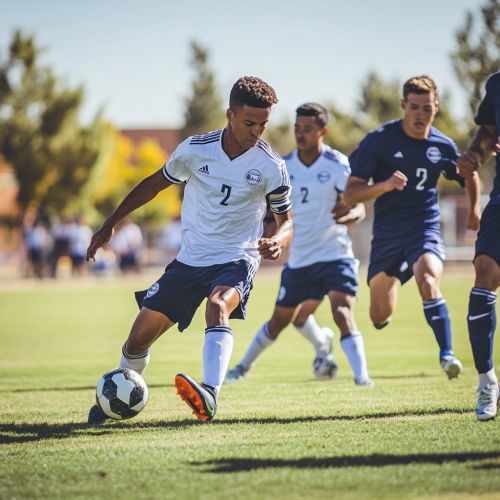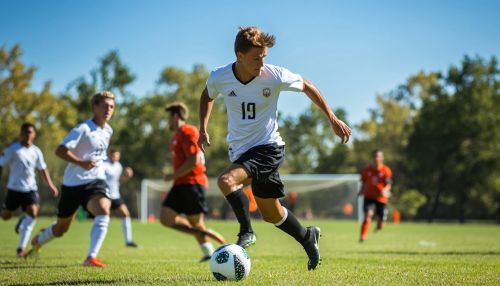Middle Atlantic Conferences
Overview
The Middle Atlantic Conferences (MAC) is a collegiate athletic conference affiliated with the NCAA's Division III. The conference is composed of institutions located primarily in the Mid-Atlantic region of the United States, encompassing states such as Pennsylvania, New Jersey, and Maryland. The MAC is known for its commitment to balancing academics and athletics, promoting a competitive environment while ensuring that student-athletes maintain their academic responsibilities.
History
The Middle Atlantic Conferences were established in 1912, initially as a coalition of several colleges aiming to create a structured environment for intercollegiate athletics. Over the years, the conference has undergone numerous transformations, including expansions and reorganizations, to accommodate the growing number of member institutions and the evolving landscape of college sports.
Early Years
In its formative years, the MAC was a pioneer in organizing collegiate sports competitions in the Mid-Atlantic region. The original members included institutions that were geographically close, facilitating easier travel and fostering regional rivalries. The conference initially focused on sports like football, basketball, and track and field, which were popular among the member schools.
Expansion and Reorganization
Throughout the 20th century, the MAC expanded to include a broader range of sports and more member institutions. This expansion was driven by the increasing popularity of college athletics and the desire to provide more opportunities for student-athletes. In 1974, the conference underwent a significant reorganization, splitting into two separate entities: the MAC Commonwealth and the MAC Freedom. This division allowed for more focused competition and better alignment of member institutions based on their athletic programs and institutional missions.
Structure and Governance
The governance of the Middle Atlantic Conferences is overseen by a council composed of representatives from each member institution. This council is responsible for setting policies, organizing competitions, and ensuring compliance with NCAA regulations. The MAC operates under a set of bylaws that outline the responsibilities of member schools, the eligibility of student-athletes, and the procedures for resolving disputes.
Member Institutions
The MAC is composed of a diverse group of institutions, each bringing unique strengths to the conference. These schools range from small liberal arts colleges to larger research universities, all sharing a commitment to the values of Division III athletics. Notable member institutions include Messiah University, Stevenson University, and Lebanon Valley College.
Sports and Championships
The Middle Atlantic Conferences sponsor a wide array of sports, providing student-athletes with opportunities to compete at a high level while pursuing their academic goals. The conference hosts championships in sports such as soccer, swimming, and volleyball, among others. These championships are highly competitive, drawing athletes from across the region and showcasing the talent and dedication of the participants.


Academic and Athletic Balance
One of the defining characteristics of the MAC is its emphasis on maintaining a balance between academics and athletics. The conference encourages student-athletes to excel in their studies while participating in sports, reflecting the core values of Division III athletics. This balance is supported by academic support services, flexible scheduling, and a culture that prioritizes educational achievement.
Academic Support
Member institutions provide a range of academic support services to help student-athletes succeed in their studies. These services include tutoring, academic advising, and time management workshops. The MAC also recognizes academic excellence through awards and honors, celebrating student-athletes who achieve high academic standards.
Athletic Achievements
While academics are a priority, the MAC is also known for its competitive athletic programs. The conference has produced numerous All-American athletes and teams that have achieved success at the national level. This success is a testament to the dedication and talent of the student-athletes and the quality of coaching and facilities provided by member institutions.
Community Engagement and Development
The Middle Atlantic Conferences are committed to fostering community engagement and development through athletics. Member institutions participate in community service projects, outreach programs, and initiatives that promote health and wellness. These efforts help strengthen the relationship between the colleges and their surrounding communities, creating a positive impact beyond the playing field.
Community Service
Student-athletes in the MAC are encouraged to engage in community service activities, contributing to causes such as youth sports programs, environmental conservation, and social justice initiatives. These activities provide valuable learning experiences and help develop leadership skills, empathy, and a sense of civic responsibility.
Health and Wellness Initiatives
The MAC promotes health and wellness through various initiatives aimed at improving the physical and mental well-being of student-athletes. These initiatives include mental health awareness programs, nutrition workshops, and injury prevention strategies. By prioritizing health and wellness, the conference ensures that student-athletes can perform at their best both academically and athletically.
Challenges and Future Directions
Like many collegiate athletic conferences, the Middle Atlantic Conferences face challenges related to funding, compliance with NCAA regulations, and the evolving landscape of college sports. However, the MAC remains committed to its core values and continues to adapt to changing circumstances.
Financial Sustainability
Ensuring financial sustainability is a key challenge for the MAC and its member institutions. The conference relies on funding from various sources, including institutional support, sponsorships, and revenue from athletic events. To maintain financial stability, the MAC is exploring new revenue streams and cost-saving measures.
Adapting to Change
The landscape of college athletics is constantly evolving, with changes in technology, student preferences, and regulatory requirements. The MAC is proactive in adapting to these changes, implementing new technologies, enhancing facilities, and revising policies to better serve student-athletes and member institutions.
Conclusion
The Middle Atlantic Conferences play a vital role in the landscape of Division III athletics, providing student-athletes with opportunities to compete at a high level while pursuing their academic goals. Through its commitment to balance, community engagement, and adaptability, the MAC continues to be a leader in collegiate athletics, fostering an environment where student-athletes can thrive.
